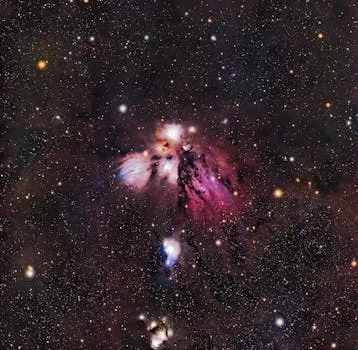
“
Beyond the Milky Way: Imagining New Worlds and Possibilities
Introduction to the Galaxy and Beyond
Beyond the Milky Way: Imagining New Worlds and Possibilities is a concept that has fascinated humans for centuries. The Milky Way, our home galaxy, is just one of the billions of galaxies in the observable universe. As we continue to explore and understand our galaxy, we are also drawn to the mysteries that lie beyond it. In this article, we will delve into the possibilities of new worlds and discoveries that await us in the vast expanse of space.
Understanding the Milky Way Galaxy
The Milky Way is a barred spiral galaxy, consisting of hundreds of billions of stars, gas, and dust. It is estimated to be about 100,000 light-years in diameter, with our solar system located in one of its outer spiral arms. The galaxy is thought to have formed around 13.6 billion years ago, during the early days of the universe. The Milky Way is also home to various types of celestial objects, including planets, asteroids, comets, and black holes. For a deeper dive into the wonders of our galaxy, check out Charting New Realms: The Journey of Imagination Beyond the Stars.
Exploring the Cosmos Beyond the Milky Way
As we look beyond the Milky Way, we enter the realm of the cosmos, where the possibilities are endless. The universe is estimated to contain over 200 billion galaxies, each with its own unique characteristics and features. Some galaxies are similar to the Milky Way, while others are vastly different, with different shapes, sizes, and compositions. The cosmos is also home to various types of celestial objects, including neutron stars, supernovae, and gamma-ray bursts. For an inspiring perspective on the power of imagination in space exploration, read Soaring Through the Cosmos: The Power of Imagination Beyond the Stars.
Imagining New Worlds and Possibilities
As we explore the cosmos, we are also drawn to the possibilities of new worlds and discoveries. The concept of exoplanets, or planets that orbit stars other than the Sun, has become a major area of research in recent years. Thousands of exoplanets have been discovered so far, and many of these planets are believed to be located in the habitable zones of their respective stars, where conditions are suitable for life. The possibility of life beyond Earth is a tantalizing one, and scientists continue to search for evidence of biological activity on other planets and moons in our solar system and beyond. To further understand the creative potential in this exploration, consider reading Beyond Stars: Where Imagination Takes Flight.
Takeaways
- The Milky Way is just one of the billions of galaxies in the observable universe.
- The cosmos is home to various types of celestial objects, including planets, asteroids, comets, and black holes.
- The possibility of life beyond Earth is a tantalizing one, and scientists continue to search for evidence of biological activity on other planets and moons.
- The discovery of exoplanets has become a major area of research in recent years, with thousands of exoplanets discovered so far.
- The cosmos is full of mysteries and wonders, and continued exploration and research are necessary to uncover its secrets.


